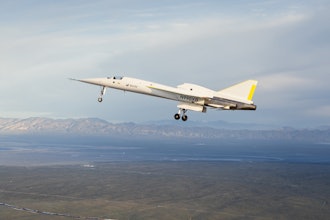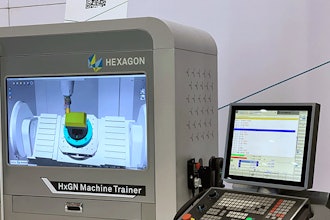Daniela Carrillo, Research Analyst, Frost & Sullivan
Superconducting magnets (or SQUID sensors as they are known in the magnetic sensors industry) have been considered "the heart" of the biomedical arena, especially in equipment use in Magneto-encephalography (MEG) in the innovative Fetal magneto-cardiography (FMCG) and FMEG. This has been apparent since these technologies were upgraded and started to have a significant recognition in the medical market.
Besides in the biomagnetic market there are other interesting areas where SQUID sensors play an important role, for example in the industrial field, as a component of the innovative magnetic-levitation train called the Yamanashi Maglev Test Line.
SQUID Sensors
Some of you may be asking yourselves what exactly is a SQUID sensor? How does it work? Why is so important for the biomagnetic and industrial market? Let me start first by briefly define what a SQUID sensor is. It is a Superconducting Quantum Interference Device highly sensitive and use for detecting magnetic flux or magnetic fields. They are also called cryogenic or superconducting magnetometer. These sensors are made of a superconducting ring, which have one or two weak switching points (known as Josephson Junctions or fragile links) attached. These sensors are amazingly versatile as they can measure any physical quantity, which can be converted into a magnetic flux such as magnetic fields, electric currents and voltages or magnetic susceptibility.
There are two type of SQUID sensors: Low-Temperature (LTS) SQUID and High-Temperature (HTS) SQUID sensors. These sensors need a cryogenic environment, so LTS SQUID sensors become superconducting at temperatures of reach temperatures of -459 degrees (F) Fahrenheit or -2 degrees (C) Celsius, which according to present-day physics, is known as absolute zero. On the other hand, HTS SQUIDs reach higher temperatures of approximately 280 degrees F.
Since the SQUID sensor is the only magnetic sensor able to detect the most diminutive magnetic signal it is an essential part in any type of biomagnetic device. The following are the basic components of a SQUID system:

Even though, the SQUID sensor market is the smallest section (close to 1%) of the total world magnetic sensor industry these sensors are considered to be a significant component in biomedical devices and in several research and industrial applications. Most SQUID sensor manufacturers are beginning to move toward the production of complete SQUID systems, instead of selling just the sensors. This would definitely help them expand their sales in the medical and research fields, which are hesitant in accepting and adopting new technology.
Figure 1-A gives the percentage revenue breakdown of the total market by the three main product types and forecasts it for the period 2003-2006.
Biomagnetism
First of all, let me describe the MCG it refers to the detection of the heart''s electromagnetical activity and provides a new method to monitor fetal cardiac activity. In addition, MEG can be defined as the measurement of the weak magnetic fields generated by neuronal activity in the human brain.
Due to its highly sensitive structure, SQUID magnetometers are able to detect the flow of an electrical current that creates a corresponding magnetic field. Thus, bioelectric activity will generate biomagnetic fields. Systems such as MCG and MEG are able to diagnose any type of brain or heart diseases, as well as measure muscle activity. There is no corresponding electrical technique and biomagnetic measurements offer unique measurement capabilities and are able to detect tiny magnetic fields produced by brain activity. Unlike CT or MRI imaging which yield structural information, biomagnetic measurements offer the potential of real-time functional imaging.
Fetal MEG System
Currently, the SQUID sensor technology has developed more rapidly in the medical arena, especially with the introduction to the market of the fetal MEG/MCG system to the market. This system is a non-invasive instrument that examines fetal development in a very premature stage a factor that is impossible when using other MEG system. Industry leaders believe the future of this technology will increase the demand for SQUID sensors. Fetal magnetocardiography (FMCG) has promising potential as an alternative method of fetal supervision. Moreover, due to its high temporal resolution, the FMCG allows a more accurate beat to beat representation of fetal heart rate than rely on the Cardiotocography, which is based on the registration and evaluation of ultrasound pulses. The FMCG may be used to examine signal morphology, cardiac conduction system, arhythmias, cardiac congenital defects, growth, development of the autonomic nervous system and fetal stress.
The medicine market is increasing at a very fast pace as new technology is introduced and medical and biomedical devices are being upgraded. As a result clinics or hospitals are able to offer patients safer and higher quality devices.
Fetal MEG is considered to be more important than a system use for pediatric or adult use. This is due to the fact that the fetus is very sensitive; therefore any injections, radioisotopes need to be avoided. There are approximately 151 SQUID sensors in a MEG system the quantity of SQUID sensors in a system depends mainly on the number of channels in each system. This provides a better coverage of the mother''s anterior abdominal surface, especially in late gestation.
CTF Systems, Inc., along with the University of Arkansas for Medical Science (UAMS, Little Rock, AR, USA) and the US National Institute of Neurological Disorders and Stroke), was the first company to built, the first dedicated fetal MEG system, known as SARA (SQUID Array for Reproductive Assessment). This innovative system is not yet fully developed in the biomedical market. It is still in its infancy stage due to the markets'' conservatism when it comes to adopting new technology. But, according to industry participants, it is expected to be a promising market because of its non-invasiveness properties.
Until now, the only sensors used in the MEG systems were the LTS SQUIDs, because unlike the HTS SQUIDs, they have the required sensitivity. Although, SQUID manufacturers are working on the development of a HTS SQUID gradiometer able of operating in routine fetal and adult heart monitoring. In addition, they accomplish this by utilizing an inexpensive, non-metal shielded environment that does not contain low frequency magnetic shielding.
This is a good opportunity for HTS SQUID sensors to begin penetrating into a significantly promising industry, the biomedical market; moreover, this would translate into higher revenues. According to the forecast for the Frost & Sullivan world report on magnetic sensors (7729-32) HTS SQUID sensor is the smallest market of the total SQUID sensor market. The following figure highlights the unit shipments, the total revenues and the revenue growth rates for the world HTS SQUID sensors market. As it is shown below by 2006 sale revenues are expected to reach about $3.5 million at a compounded annual growth rate of 6.1 %.
Figure 1-BTotal HTS SQUID Sensors Market: Unit Shipments, Revenues and Revenue Growth Rates (World), 2000-2006
Magnetic-Levitation
There is a new application, which relies on superconductive devices in order to operate, it is the magnetic-levitation train or most commonly known as (the Yamanashi Maglev Test Line). Maglev is a combination of superconducting magnets and linear motor technology that realizes super high-speed running, safety, reliability, low environmental impact and minimum maintenance. This super high-speed transport system (which runs approximately 500 km/hr) with non-adhesive drive system independent of wheel-and-rail frictional forces has been a long-standing dream project of railway engineers.
Maglev, is a system in which the train runs levitated from the guideway (corresponding to the rail tracks of conventional railways) by using electromagnetic forces between superconducting magnets on board, the vehicle and coils located on the ground. Due to the SQUID sensor sensitivity and its ability to detect the smallest magnetic field allows it to be utilize in innovative highly advanced applications.
In conclusion, although the SQUID sensor market is expected to continue representing the smallest portion of the total world magnetic sensor market, the fast pace of Research and Development activity in the biomedical, research and industrial market is going to open a lot of door for these high-tech sensors. As these markets keep demanding high sensitivity and high accuracy instruments, both LTS and HTS SQUID sensors are expected to grow in sales, having greater revenue growth rates.
Article ©1999 Frost & Sullivan






















